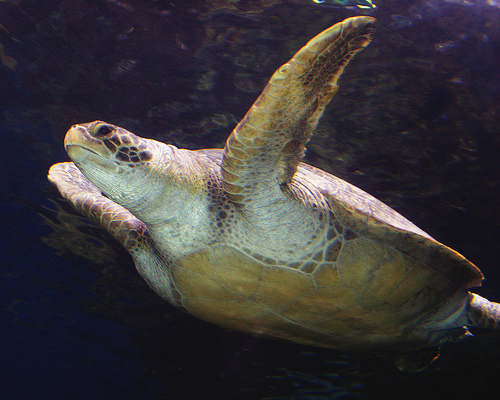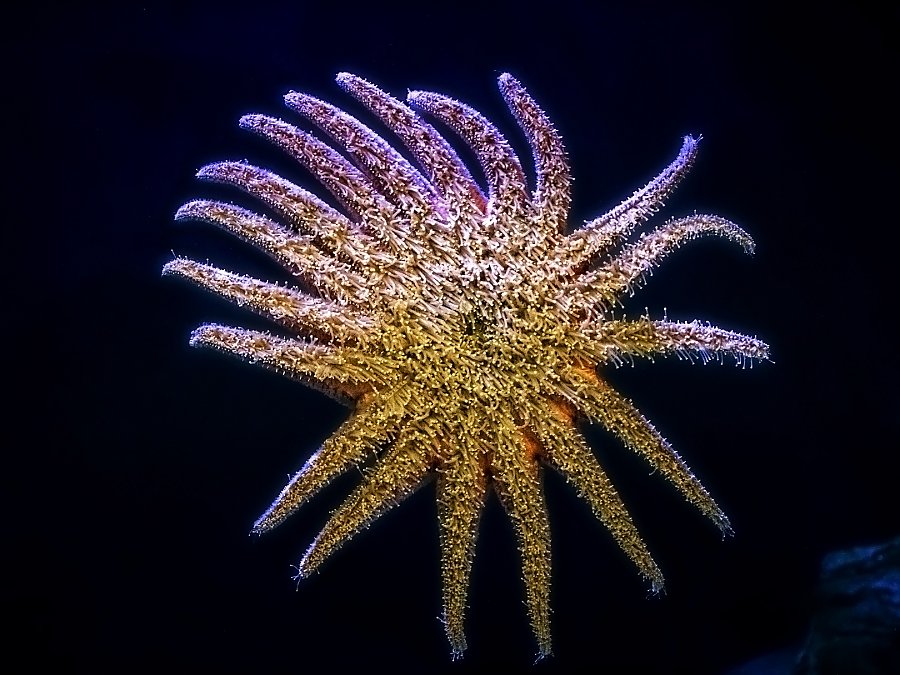
Ralphs
Discount tickets available at Ralphs for a limited time
The Aquarium of the Pacific, Birch Aquarium, California Academy of Sciences, and the Sunflower Star Lab have successfully induced spawning in sunflower sea stars and hope to help reestablish wild populations off the nation’s west coast

Credit: Robin Riggs
October 18, 2023
October 18, 2023 Long Beach California—A major effort is underway to help save the critically endangered sunflower sea star from extinction. In California, the Aquarium of the Pacific, Birch Aquarium at Scripps Institution of Oceanography at UC San Diego, California Academy of Sciences, and the Sunflower Sea Star Lab recently teamed up at Birch Aquarium to spawn this species. The group continues to collaborate with the goal of reproducing this species to help develop recovery strategies.
The group was able to collect reproductive cells from spawning male sunflower sea stars at Birch Aquarium in La Jolla, California. The cells were cryopreserved by San Diego Zoo Wildlife Alliance researchers and stored in the SDZWA’s Frozen Zoo™. If the cells are viable after thawing, they will be used to fertilize eggs from female sunflower sea stars at the Aquarium of the Pacific later this year.
“It’s incredible to see the huge collaboration that has taken place over the past two years to bring awareness to the plight of the sunflower sea star. There is a massive team of scientists and educators working to try to save this species in the wild, and seeing how far we’ve come in such a short time gives me a lot of hope for the future. This is the power of collaboration at work,” said Jenifer Burney, Aquarium of the Pacific senior aquarist and co-chair of the Association of Zoos and Aquariums (AZA) and Aquarium’s SAFE (Saving Animals from Extinction) Sunflower Sea Star Program.
Aquarium of the Pacific and Omaha’s Henry Doorly Zoo & Aquarium are co-leading AZA’s SAFE Sunflower Sea Star Program. The California partners are part of this conservation group whose collective goal is to save the species from extinction. A Roadmap to Recovery was published by a multi-faceted and multinational group; the AZA SAFE efforts feed into these larger recovery goals. Sunflower sea stars are listed as critically endangered by the International Union for Conservation of Nature. There has been a decline in sunflower sea star population in the past decade due to sea star wasting disease. It is possible that this disease could be correlated with rising sea temperatures—one of the many effects of climate change on the ocean.
“Sunflower Stars are considered functionally extinct in our own state of California,” said Melissa Torres, assistant dive safety officer and aquarist at Birch Aquarium. “This species is also considered to be functionally extinct in Oregon. That’s why this recent spawning success is a monumental milestone in the recovery of these larger-than-life stars.”
This species of sea star plays an important role in the ecosystem, including maintaining the balance in the kelp forest. Sunflower sea stars are considered a keystone species in kelp forest ecosystems due to their natural predation on sea urchins. By consuming sea urchins, sunflower sea stars help keep their populations in balance, which prevents them from overeating kelp. This helps protect kelp forests, which provide vital habitat for marine life and benefits for humans such as producing oxygen, absorbing carbon, and protecting coastlines. The habitat of the sunflower sea stars is from Unalaska Island, Alaska, to Baja California. Sunflower sea stars can weigh up to 13.4 pounds and reach a length of up to 3.3 feet from arm tip to arm tip.

Discount tickets available at Ralphs for a limited time